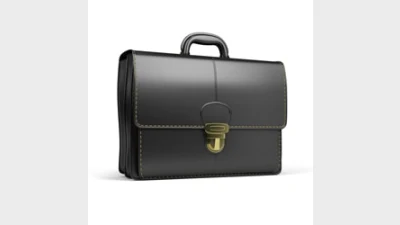A guide to in specie superannuation contributions



Stephen Miller outlines some key issues to consider before recommending clients make in specie superannuation contributions.
Contributing an asset other than cash into a superannuation fund (an ‘in specie’ contribution) can reduce or eliminate the tax payable on future investment earnings. However, a capital gains tax (CGT) event will generally occur when ownership is transferred. The CGT implications should be taken into account, although:
- Some clients may trigger a capital loss, which could be used to offset current or future year capital gains from other assets held in their own name; and
- Where a capital gain is made, the client may be able to reduce, or eliminate, CGT by claiming a portion of the in specie contribution as a tax deduction.
You should also keep in mind that if an asset is retained outside superannuation, CGT will generally be payable on capital gains made when the asset is eventually sold.
Alternatively, if a client transfers the asset into their super fund now, while CGT will be payable on capital gains made up to this point, no CGT will be payable on future growth if the eventual sale occurs in the pension phase (provided the asset has been segregated to meet pension liabilities).
Transferable assets
Superannuation fund trustees are generally prohibited from acquiring assets from related parties, such as fund members, their family and partners, related companies and trusts.
There are, however, some exceptions outlined in section 66 of the SIS Act. These include business real property, listed securities, units in widely held unit trusts and ‘in-house assets’ where the value doesn’t exceed 5 per cent of the total market value of the fund’s assets.
Contribution caps
In specie contributions are subject to the same caps that apply to cash contributions. This means that:
- If the in specie contribution is made as a personal after-tax contribution, this amount will count, along with certain other amounts, towards the non-concessional contribution (NCC) cap;
- If a client claims some of the in specie contribution as a tax deduction (where eligible), this amount will count, along with certain other amounts, towards their concessional contribution cap; and
- When transferring business real property into superannuation as an in specie contribution, a client may be eligible to claim the CGT cap.
Lumpy assets
If a client owns 100 per cent of an asset and the value exceeds their NCC cap, they could make:
- An in specie after-tax contribution for an amount equivalent to their NCC cap; and
- An in specie contribution for the remaining value on behalf of their spouse (provided they are also a fund member), which could be counted towards the spouse’s NCC cap.
Alternatively, if the asset is jointly owned by a client and their spouse (or another fund member), both the client and their spouse/other fund member could make in specie after-tax contributions equivalent to the value of their share in the asset up to their respective NCC caps.
Another way to get a lumpy asset into superannuation where the NCC cap is an issue is to transfer part of the ownership to the fund, which will result in the asset being owned as ‘tenants in common’ with the member.
When using this strategy, it’s recommended the trustees put in place a legally binding written agreement with the other parties to ensure the other party’s actions don’t put the fund at risk of non-compliance.
In addition, proper records should be maintained (eg, it’s important to update the respective ownership interests when they change).
Contribution timing
When an asset is transferred in specie to a fund, the effective date will be when the fund acquires beneficial ownership of the asset.
For listed securities, beneficial ownership will be taken to be acquired when a properly executed off-market share transfer form is completed in a registrable form.
For business real property, beneficial ownership is transferred when the fund obtains a properly executed transfer in a registrable form, together with any title deeds and other necessary documents to enable registration of the fund as the legal owner.
In the lead up to the end of a financial year, it’s especially important to get the timing right, otherwise in specie contributions could easily fall into a different financial year than the client had intended.
Valuing contributions
The value of an in specie contribution is taken to be the market value of the asset at the time the contribution is received by the super fund.
In TA 2008/12, the ATO stated it was concerned about arrangements where the fund doesn’t recognise and record non-cash contributions (including in specie) at the true market value of the asset in its accounts.
Other expenses
When determining whether an in specie contribution is worthwhile, you should consider any other costs that could be incurred, such as stamp duty on business real property.
Fund specific rules
Even though an asset may be of a type that can be acquired from a related party under superannuation law, you should check the fund is able to accept in specie contributions.
This option is usually only available with most SMSFs and some public offer funds, but typically not industry funds. You should also find out if the fund is able to administer the particular asset and whether any other specific rules apply.
Instalment warrants
An alternative way to get certain assets into super is for the fund to purchase the asset using a combination of existing cash and money borrowed via an instalment warrant arrangement. Where this strategy is used, the transaction would be considered a purchase, not a contribution.
As a result, the client’s contribution caps would not be affected in the financial year the arrangement is implemented. The client would, however, need to ensure sufficient contributions are made to enable the fund to meet the instalment payment(s).
Stephen Miller is a senior technical consultant at MLC Technical Services.
Recommended for you
When entering paid employment, it’s not long before we are told that we’ll need to lodge a tax return but there are times when a person will be excepted.
Anna Mirzoyan examines how grandfathering affects income support payments and how factors such as paying for aged care can impact them.
There are specific requirements that only apply to trustees of self-managed superannuation funds, writes Tim Howard, including the allocation in their investment strategy.
Investments bonds offer a number of flexible, tax-advantaged benefits, writes Emma Sakellaris, but these are often overlooked as old fashioned when it comes to portfolio allocations.











